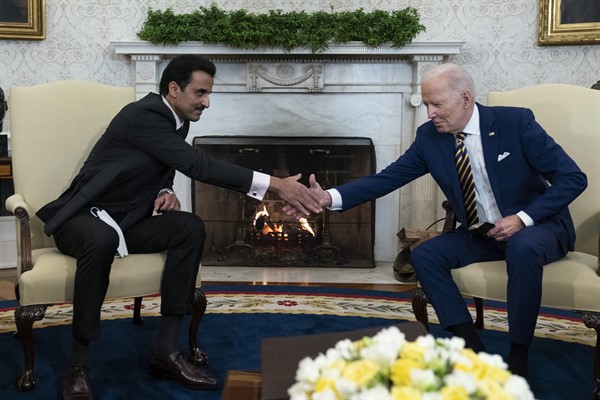Just before U.S. President Joe Biden met with Qatar’s emir, Tamim bin Hamad al-Thani, in the Oval Office on Tuesday, the White House shared a post on Twitter listing the visit’s agenda, which included “security and prosperity in the Middle East, global energy supplies, Afghanistan and more.” It was clear Sheikh Tamim’s visit was not just symbolic.
Sheikh Tamim is the first regional leader to meet with Biden since he became president, a sign that Washington views Doha as an important element in confronting urgent U.S. priorities. And as if to underscore that point, Biden announced this week that he had designated Qatar a Non-NATO ally, a status that paves the way for greater cooperation on defense trade and security.
It’s almost hard to fathom the rise of this miniscule emirate from regional pariah to pivotal player in multiple global conflicts. Qatar is barely the size of Connecticut, and though it is bustling with foreign workers, it has only 300,000 citizens. Tiny countries surrounded by powerful, ambitious neighbors often try to keep their heads down. Qatar has done precisely the opposite.

